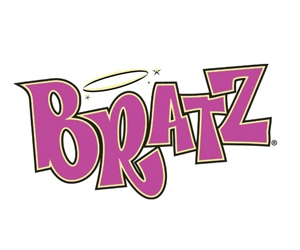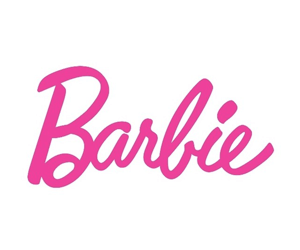10 Iconic Barbie Dolls From Around The World
Barbie dolls have been a beloved toy for over 60 years, providing fun and inspiration to millions of children worldwide. While the quintessential Barbie is an American icon, Mattel has created numerous Barbie Dolls from around the world representing cultures and nationalities from around the globe. These international Barbies allow kids to learn about other countries' traditional clothing, cultural influences, and history.
Here, we will explore 10 of the most iconic and culturally significant Barbie dolls from around the world Mattel has released over the decades that represent different nations and ethnicities. We'll look at their traditional outfits, cultural backgrounds, and what makes each doll unique. From Spanish flamenco dancer Barbie to a royal Aztec princess, read on for a worldwide tour through Barbie history!
The 10 dolls highlighted here capture the diversity and richness of human cultures, showcasing intricate traditional costumes and timeless beauty ideals from civilizations across continents. Whether you collected these dolls as a child or are just learning about their cultural symbolism, these iconic Barbies are fascinating ambassadors of both Barbie's global reach and the world's varied national identities.
1. Spanish Barbie Doll (1983)
Hola (hello) from Spain! The Spanish Barbie doll wears a traditional dress for dancing, with the ruffled layers of red fabric trimmed in black lace. The front is short so she can dance freely. The flowing train in the back allows Barbie to pick it up and swing it about while she "dances". Spain's native dances include the sardana and the famous flamenco with lots of clapping and foot-stomping.
This 1983 doll honors Spain's rich cultural tradition of dance, especially flamenco, an art form with ancient roots that blends music, song, and movement. Flamenco dance rose to prominence in the 18th and 19th centuries in Andalusia, the southernmost region of Spain. While the ruffled red dress is not technically a traditional flamenco costume, it evokes the spirit of movement and passion associated with this iconic Spanish dance.
The lace trim and train reflect the blend of Moorish, Jewish, and Roma influences found in traditional flamenco costumes. This doll shares a piece of Spain's cultural heritage with children worldwide. Feliz dia de la Hispanidad (Happy Hispanic Heritage Day)!
2. Irish Barbie Doll (1984)
"Irish Barbie doll is from the lush "Emerald Isle" west of England. She wears an exquisite costume — a green skirt, a long sleeved fitted white lace blouse with attached green shawl draped about her shoulders with golden trim. Her long flowing hair falls delicately around her face, and is crowned by a white cap with lace trim."
Ireland is known for its rich cultural traditions, from music and dance to storytelling and myths. This 1984 Irish Barbie captures the spirit and beauty of the Emerald Isle with her ornate costume. The green skirt and shawl reflect Ireland's verdant landscapes, while the lace blouse and cap showcase delicate Irish needlework.
Irish lace making has a centuries-long history, with designs growing more intricate over time. The inclusion of the delicate white cap trimmed in lace is a nod to traditional Irish brides, symbolizing purity and maidenhood. This Barbie wears an idealized version of Irish women's social dress from the 19th century, when lace caps were commonly worn by mature women and girls.
From her flowing red locks to emerald accents, the Irish Barbie doll honors the beauty and artistry of Irish culture. She brings to life the warmth and magic of the Emerald Isle. Top o’ the morning and Happy St. Patrick’s Day!
3. Japanese Barbie Doll (1985)
Konnichiwa (hello) from Japan! The Japanese Barbie doll from around the world wears a stunning red kimono with spring flowers. Her black hair is pulled away from her face and tied with a red and white hairband. Sayonara (goodbye)!
This Barbie provides a miniature cultural immersion into Japan's national dress, the elegant kimono. Though kimonos are often worn during festivals and special occasions today, they were once everyday garb. The word "kimono" means "thing to wear," reflecting its status as the mainstay of Japanese fashion for centuries.
This doll sports a vibrant red kimono covered in delicate pink and white floral designs that evoke the cherry blossoms associated with springtime in Japan. Her sleek black hair is styled in a traditional bun with decorative hair pins and headband. The simple red and white color scheme reflects the minimalist, nature-inspired aesthetics of Japanese culture.
From subtle details like her tiny bound feet to the ornate obi belt tying her kimono shut, Japanese Barbie provides a miniature cultural education for collectors and children alike. Konnichiwa from Japan, Barbie-san!
4. German Barbie Doll (1987)
"The German Barbie doll is ready for Oktoberfest, a celebration filled with dancing, singing, and wonderful food. Her traditional folk costume consists of a long, flowing skirt, white apron, and red jacket with white trim and golden buttons. She also wears lacy white stockings with black shoes. Let the celebration begin!"
This German Barbie is dressed for Oktoberfest, the beloved fall festival held annually in Munich, Germany. Oktoberfest originated in 1810 with a celebration of Crown Prince Ludwig's marriage. Today, it attracts over 6 million visitors each year for beer, pretzels, music, and cultural camaraderie.
Barbie's dirndl dress reflects traditional Bavarian fashions. Dirndls consist of a loose blouse, apron, full skirt, and corset. Popularized in the 19th century as everyday wear, they are now reserved for festivals and celebrations. Dirndls come in a variety of colors, but red skirts paired with white blouses are one of the most iconic looks.
With her stein of beer and perfect Oktoberfest outfit, German Barbie is ready to celebrate Bavarian culture and the joys of Gemütlichkeit - a feeling of friendliness, warmth, and good cheer. Prost and Happy Oktoberfest!
5. Mexican Barbie Doll (1989)
"Mexican Barbie doll's costume reflects the strong Spanish influence prevalent throughout her country. Her orange skirt is trimmed in white lace, and accented by a colorful belt. Her white blouse is decorated with red flowers. The white mantilla on her head keeps her hair out of her face, and shows off her hoop earrings."
This lovely 1989 doll celebrates the rich cultural heritage of Mexico with her traditional folklórico outfit. Folklórico clothing honors Mexico's history as a Spanish colony and indigenous roots. The elegant white blouse and orange skirt demonstrate Spanish influence, while the decorative earrings and headpiece embrace Mexico's indigenous past.
Folklórico dresses come in diverse patterns and colors, but frequently incorporate flounce skirts, off-the-shoulder blouses, and lace accents. Mexican Barbie's beautiful costume would be perfect for performing traditional dances like mariachi, jarabe tapatío, or sones.
From the delicate flowers on her blouse to the embroidered belt, Mexican Barbie's costume encapsulates the lively spirit, history, and craftsmanship of Mexican culture. She brings the vibrancy of Mexico to collectors worldwide. ¡Viva la cultura mexicana!
6. Jamaican Barbie Doll (1992)
"Barbie doll wears a costume native to her homeland, the tropical island of Jamaica. Her cool blue cotton dress is topped with a red and white apron at her waist, and a colorful handkerchief draped around her shoulders. Another handkerchief, called a turban, holds her long black hair back, displaying her lovely hoop earrings."
This Caribbean-inspired Barbie doll brings the laidback joy of Jamaica to life with her vibrant, handmade costume. Jamaica is renowned for its beautiful beaches, Reggae music, and Rastafarian culture, all of which this doll celebrates.
Her simple blue cotton dress reflects the warm climate and calls to mind the ocean surrounding this island nation. The bright red apron and shoulder wrap burst with the warm hues of the Jamaican flag. And her turban headwrap and hoop earrings showcase influences from traditional African dress.
Jamaican Barbie provides a glimpse into the creativity and cultural blending of this legendary island. From her headwrap to handwoven dress, she reminds us to relax and embrace the easygoing Jamaican motto "No problem, mon!"
7. Chinese Barbie Doll (1997)
"This Barbie doll is a living muse of Chinese beauty and cultural tradition. Dressed in a rich pink chrysanthemum print robe over a slim skirt of the same design, Chinese Barbie Doll exudes the simplistic grace of Chinese culture. Her gorgeous costume is accented by intricate black and golden bordering, with black slippers covering her feet."
This elegant doll celebrates the artistic beauty of Chinese fashion and aesthetics. While many associate China with the color red, Chinese Barbie's pink robe reflects the country’s more diverse palette and love of nature's beauty.
Chrysanthemums hold deep symbolic meaning in Chinese culture, representing nobility and longevity. Her robe features a traditional high collar and intricate yoke, with a skirt poking through the front slit. The golden trim and black slippers complete a look that balances simplicity and artistry.
From her straight black hair to her peaceful facial expression, Chinese Barbie emanates the tranquility and inner richness prized by Chinese culture. She provides a window into centuries of Chinese design, when clothing was a sublime art form and reflection of the wearer's character. This doll honors China's history of cultural refinement and aesthetic mastery.
8. Princess of Ancient Mexico Barbie (2001)
"From about 1428 until 1521, a culture grew in a vast land from the Gulf of Mexico to central Mexico and as far south as Guatemala. In what is now Mexico City lay the capital of the ancient Aztec people formerly known as Tenochtitlan. Here there is a huge temple, many canals and a royal palace. A beautiful young girl with long dark hair and deep brown eyes lives in the royal palace. Like all nobles, she wears clothes made of brightly colored cotton with decorations made of gold and feathers. The most prized feathers of all are the iridescent green ones from a bird called the quetzal."
This Princess of Ancient Mexico Barbie provides a window into the rich cultural legacy of the Aztec civilization in Mexico. As described above, she wears traditional Aztec royal garb, including brightly colored cotton, gold adornments, and prized green quetzal feathers.
The Aztec empire reigned in Mexico from the 14th to 16th centuries until the Spanish arrived. Known for their architectural ingenuity, spiritual rituals, and brilliant feather artistry, the Aztec created an advanced civilization that valued beauty and skill.
This doll's regal costume and accessories reflect the elite status and abundant resources available to those of noble birth in ancient Aztec society. With her intricate jewelry, elegant hair, and cocoa-colored skin, she brings the glory of Mexico's Mesoamerican past to life. Though the Aztec empire is long gone, this Princess Barbie helps teach modern children about Mexico’s indigenous heritage.
9. Carnaval Barbie Doll (2005)
"Every year, the city of Rio de Janeiro erupts in a frenzy of music, dance, sequins, and feathers while the Cariocas (local inhabitants) and countless visitors celebrate carnaval! In tribute to Rio de Janeiro's joyous, week-long celebration, Barbie® doll wears an incredible Brazilian costume featuring a bright purple outfit with a striking, midriff baring halter top and a short skirt. Golden platform shoes and a fabulous headpiece complete the hot-hot-hot ensemble."
Carnaval Barbie perfectly captures the fun, fancy, and nonstop energy of Brazil’s legendary pre-Lent celebration. Carnaval features parades, dancing, music, and wild costumes as a final blowout before the discipline of Lent. Rio de Janeiro hosts one of the world's biggest Carnaval festivities, with hundreds of dance groups parading through the streets.
Barbie’s bold purple ensemble and crown of feathers embody Carnaval style: daring, dramatic, and a bit risqué. She's ready to samba the night away in true Brazilian fashion! With her elaborate costume and radiant smile, Carnaval Barbie reminds us that life is meant to be enjoyed. Let’s party!
10. Russia Barbie Doll (2009)
"Gorgeous, glamorous, and oh-so-elegant, Russia Barbie® doll captures her ethnic roots with a touch of va-va-voom! Long flowing blond locks, striking face paint, and a keen fashion sense set this doll apart. Fashionable ensemble features a dark blue coat dress with golden trim, stylish black boots, and faux fur ushanka (traditional Russian hat) and faux fur muff."
Sophisticated and stunning, the Russian Barbie doll provides a glamorous glimpse into Slavic culture. With her blonde locks, peach complexion, and brilliant blue eyes, she embodies the Russian beauty ideal. Her posh winter outfit blends fashion and function, allowing her to take a winter troika ride in style.
While this doll plays to Russian stereotypes with her fur hat and coat, she also honors the country’s cultural past as the imperial capital of lavish Saint Petersburg. Her blue dress recalls the extravagance of Russian nobility, while the bold golden accents reflect the opulence of Russian Orthodox churches.
From the decadence of the tsars to the enigma of modern Russia, this doll lets children discover the complexity and richness of Russian culture. На здоровье (cheers) to Russia Barbie!
For over six decades, Barbie has transcended her roots as a fashion doll to become a global cultural icon. Mattel’s numerous international dolls pay tribute to cultures across continents while allowing kids to imagine life in other places.
These 10 dolls provide just a sample of the many international Barbies that have been created, but they demonstrate Barbie’s cultural diversity and educational potential. Children can learn about clothing, dance, history, and beauty ideals from these meticulously crafted Barbies dressed in traditional garb.
Whether honoring Irish lace making or Brazilian Carnival, these dolls create miniature cultural ambassadors. They inspire children to learn about the world’s rich tapestry of nations and customs.
So next time you see Barbie Dolls from around the world, look closer. She’s not just a toy - she’s a tiny window into the story of humankind, ready to be opened.
Frequently Asked Questions
Q: How many international Barbies have been made since Barbie's debut in 1959?
A: Mattel has created Barbies representing over 150 different nationalities and ethnicities since 1980, including dolls from 6 continents.
Q: Which was the first international Barbie produced?
A: The first international Barbie was Italian Barbie, released in 1980.
Q: Why did Mattel start making international Barbies?
A: International Barbies helped make Barbie more inclusive and educational for children worldwide. They expanded Barbie’s cultural horizons beyond mid-century America.
Q: How do the international Barbies differ from regular Barbies?
A: International Barbies wear traditional cultural costumes specific to each region and have physical features/skin tones tailored to each ethnicity. Their styling celebrates cultural uniqueness.
Q: Where do the ideas for international Barbies come from?
A: Mattel designers and historians research a region’s culture, history, costumes, and art to create authentic representations with thoughtful details.
Recent Posts
-
He-Man’s Legacy: MOTU Collectibles in 2025
The Masters of the Universe (MOTU) franchise, led by the iconic He-Man, has left a powerful legacy i …Aug 26th 2025 -
Collectible TMNT Figures from the 90s
The Teenage Mutant Ninja Turtles exploded onto the scene in the late 1980s, and by the 1990s, they w …Aug 26th 2025 -
How to Style Your Loungefly Backpack
Loungefly backpacks are more than just practical accessories—they’re fashion statements, fandom show …Aug 26th 2025

































